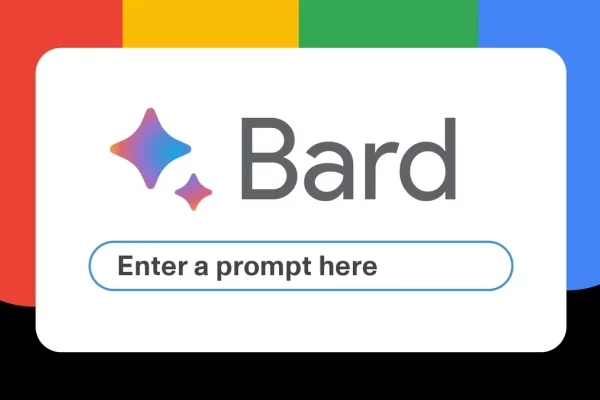Although ChatGPT is getting most of the attention as a leading artificial intelligence (AI) tool of the day, it is not the only one that exists. Recently, I stumbled into using Google’s Bard AI, and that’s the tool we’re featuring today.
Getting Started
To use Bard AI, go to https://bard.google.com/ and sign in with your Gmail account (you must sign up with a Gmail account). If you want to create a Gmail account, follow these steps.
As of October 2023, Bard AI does not have an official mobile app. This tool is currently available on desktop and laptop computers.
Features
Review this video to learn more.
The main communication back and forth with Bard AI happens from the text field at the bottom of the screen. Type your question in the prompt field, then click send.

Read on for three ways to utilize Bard AI in your language teaching.
- One way you can use this tool is by asking it to explain concepts in English as if it is a world language teacher. This can give you an idea of how to describe tricky language features to your students in a way they will understand.

Grammar features of one’s own language can be difficult to explain to a new learner. It is so natural for you to use grammar structures correctly in your native language that you may not know how to simplify it or give examples to your students. With AI, you can ask it to break down a grammar structure and even give examples. Then, you can use this with your students to facilitate their understanding.

When I asked Bard AI to explain how the imperfect tense is used in Spanish, the generated response gave multiple Spanish examples for each of the bullet point descriptions. Very helpful!
As part of its response, it created a table of infinitive and imperfect verbs, with English definitions. Because Bard AI is integrated with Google Suite’s systems, an option popped up to Export to Sheets.

When I clicked Export to Sheets, the vocabulary list showed up in Google Sheets, which is an Excel file. This user-friendly option opens up many possibilities for organizing and sharing information easily with students.

2. Another way to use this tool is by giving it a list of vocabulary words your student is using and asking Bard AI to generate a text in the target language using all of those words. You can specify how long to make the text, what grammar structure to use in the text, and what level the text should be.

Do you notice any errors? AI is imperfect and can be inaccurate, so be sure to proofread any content before using it with students. For intermediate and advanced learners, you could have them identify and correct any errors the AI made.
AI text output can be used as supplementary materials in the classroom, which may be especially beneficial for:
- Students needing an additional challenge, and therefore texts outside of the textbook are useful, or
- Students who need some help, and therefore see familiar vocabulary in additional contexts will help the meanings to “click.”
3. A third way to use this tool is you paste the link to a target language article you have found, then ask Bard AI to create three multiple choice questions about the text (or three short answer questions, or any other kind of question). You can then use these questions in class with your students.


Just remember to read the article yourself, and double-check whether Bard AI’s comprehension questions make sense.
Your chats with Bard AI will be saved on the left-hand side, so you can go back at any time to review the response or even continue the dialogue.

Final Thoughts
Similar to other AI tools, the more specifically you prompt the tool, the more specific its response. Thus, it can be that the strength of the tool is only as strong as its prompts.
- Act as if you are a world language instructor teaching adults. Explain…
- Respond to the dialogue as if you were human.
- Write a story in (target language) using (grammar structure).
- Write a story in (target language) using these vocabulary words: …, …, …
If you do not get the response you were hoping for, consider how you can revise your prompt to make it more specific. Then, try again.
Prompts can also be written in many languages. If you write in a language to
Therefore, Bard AI could be a semi-autonomous study tool for students as well. Students could chat about their hobbies or their work, thus pushing themselves to output in the target language. Moreover, AI will respond in the target language, helping their reading or listening comprehension.
Simply click on the sound icon to hear the response read aloud.

Have fun using Bard AI to enhance your teaching!




